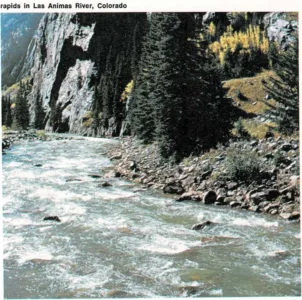The story of a river
A river may begin as a trickle of melting snow, high on a mountaintop.
It may begin as a trickle of underground water, bubbling out from under
a rock on a mountainside.
The trickle winds down the mountainside, following the easiest path in
and out among the rocks. It is so narrow you could step across it.
Farther down the mountainside, it is joined by another little trickle.
The two of them move along together, forming a wider, faster-moving
stream.
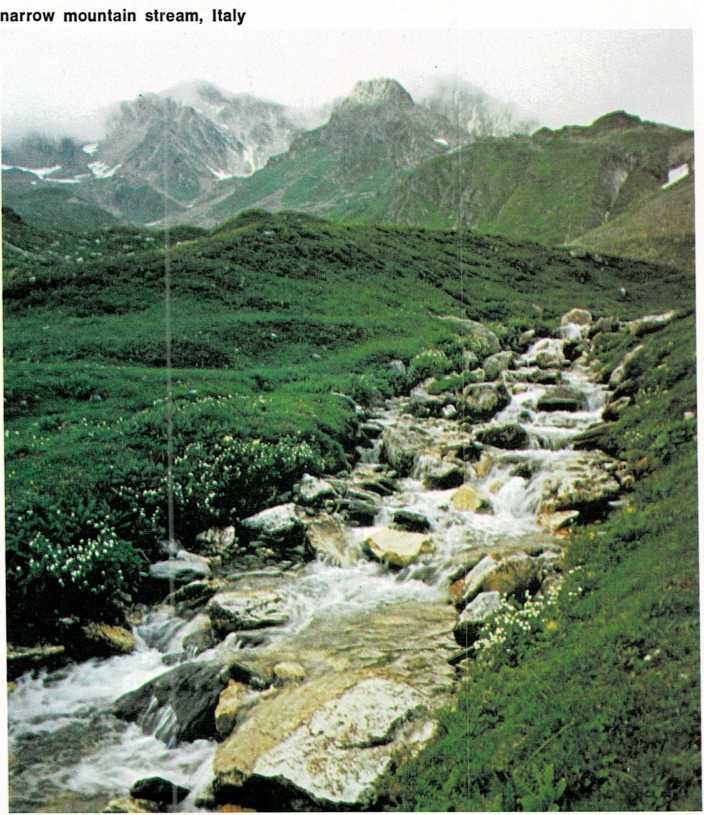

mountain stream, Poland
Soil and stones, carried along by the rushing water day after day, year
after year, cut a groove into the mountainside. The bottom of this
groove is the bed of the stream. And the high sides of the groove are
its banks.
One after another, more trickles join the stream and it grows wider. Now
it is a river, fast and wide, rushing down the sloping mountainside.
In one very steep place, the fast-moving river has worn away the soft
rock. Only bumps of hard rock are left. These rocks stick up out of the
riverbed. The river swirls and foams around them. This part of the river
is called the rapids.
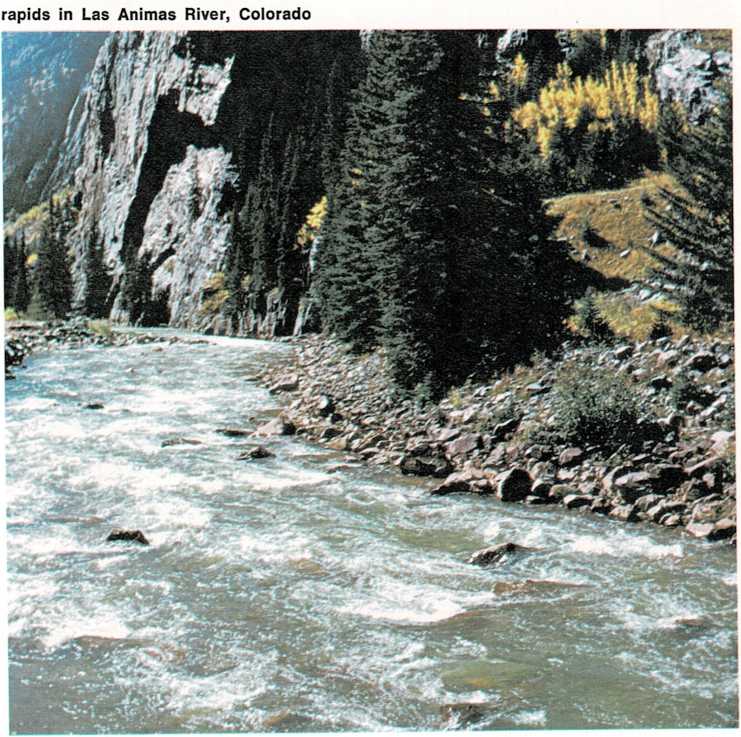
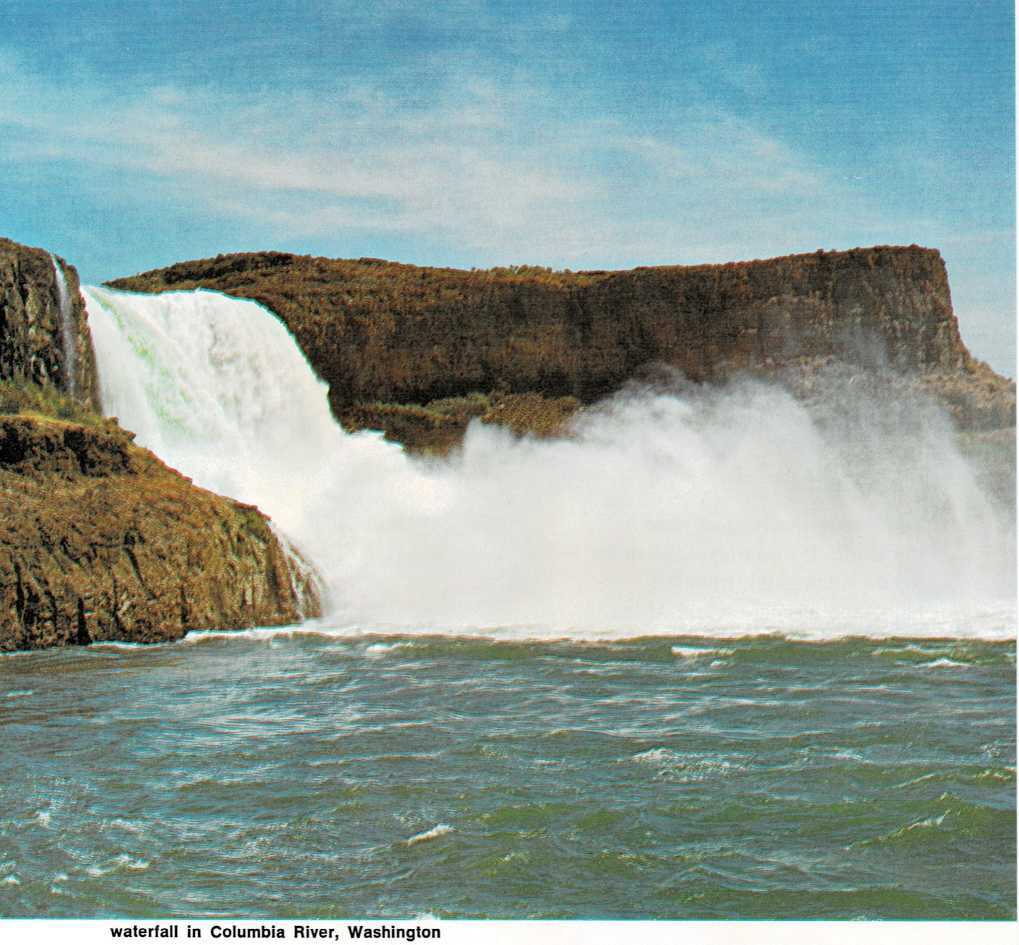
Not far from the rapids, the mountainside ends in a cliff. The rushing
river hurries to the edge of the cliff and falls hundreds of feet
(meters) in a roaring, tumbling, splashing waterfall.
The bottom of the waterfall is near the bottom of the mountain. The land
there slopes very gently, so the river moves more slowly. The river
leaves the mountain behind and flows out onto a plain. There, it moves
even more slowly, because the plain is almost level.
Other rivers from other mountains join the first river. Together they
become a great, broad river that flows slowly across the plain on its
journey to the distant sea.
It’s a Fact
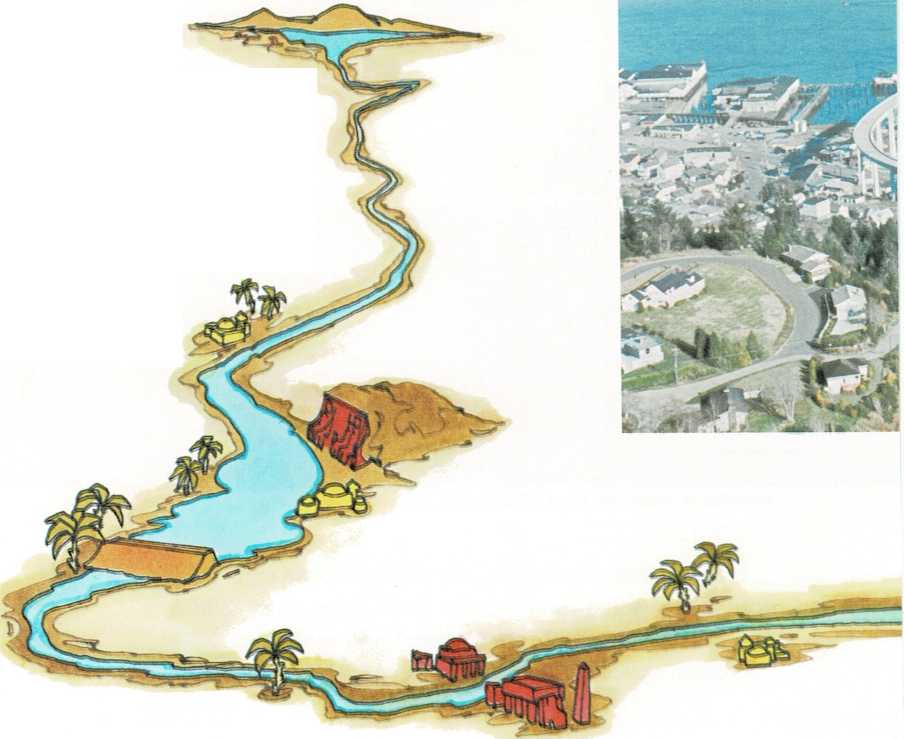
The Nile is the longest river in the world. It flows for 4,160 miles
(6,694 kilometers), from the highlands of east-central Africa, past the
temples and pyramids of Egypt, to the Mediterranean Sea.



